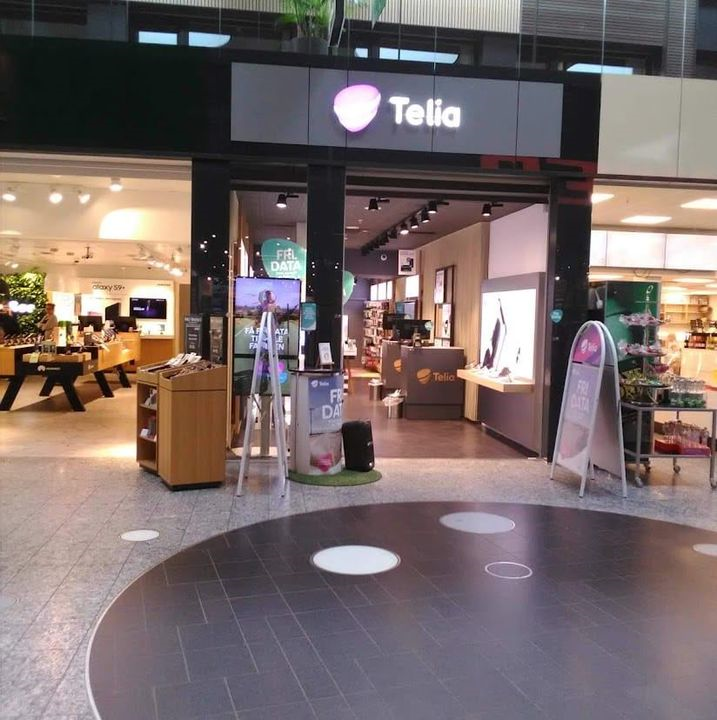5G Revolution: A Leap Towards Efficiency and Sustainability
June 29, 2025, 4:06 am

Location: Sweden, Solna kommun
Employees: 10001+
Founded date: 1853
Total raised: $533.3M
The digital landscape is changing. At the forefront of this transformation is 5G technology. It’s not just about faster downloads or smoother streaming. It’s about efficiency and sustainability. Telia, Norway’s leading telecommunications operator, is setting the pace. Their nationwide 5G rollout is a game-changer. It’s a classic case of doing more with less.
In December 2024, Telia achieved a remarkable milestone. They reached 99% population coverage with their 5G network. This was just four years after launching the first 5G base stations in Lillestrøm. The results are staggering. Data traffic surged by 102%. Meanwhile, energy consumption per terabyte plummeted by 44%. This is a clear win for both consumers and the environment.
Why the drastic reduction in energy use? The answer lies in the efficiency of the 5G spectrum. It’s like upgrading from a bicycle to a sports car. The new technology transports data more effectively. This means less energy is needed to move the same amount of information. Telia has also implemented smart strategies. For instance, they put base stations into sleep mode during off-peak hours. This simple measure optimizes resource use without sacrificing user experience.
The impact of 5G is profound. It’s not just about speed. It’s about creating a sustainable future. Telia is committed to limiting its electricity consumption increase to just 7% by 2026. They aim to achieve net-zero greenhouse gas emissions by 2040. Since 2020, their networks have been powered entirely by renewable energy. This commitment positions Telia as a leader in the telecommunications industry.
The benefits of 5G extend beyond Telia. As more operators adopt this technology, the ripple effects will be felt across the globe. Increased data traffic is expected to double by 2026. This surge presents challenges. However, with the right infrastructure, it can be managed sustainably. The telecommunications sector must adapt. The future demands it.
In early 2025, Telia topped a benchmarking report by Rohde & Schwarz. They scored an impressive 829 out of 1,000 NPS points. This places them among the best in the world. Such recognition underscores the importance of customer experience in the digital age. High speeds and low latency are no longer optional. They are essential.
The journey to 5G is not without hurdles. Infrastructure costs are significant. Upgrading existing networks requires investment. Yet, the long-term benefits outweigh the initial expenses. The efficiency gains alone can lead to substantial savings. For consumers, this translates to better service at lower costs.
Moreover, the environmental impact cannot be ignored. As the world grapples with climate change, every industry must do its part. Telecommunications is no exception. By embracing 5G, companies like Telia are paving the way for a greener future. They are proving that technology can be both advanced and responsible.
5G is more than just a technological upgrade. It’s a paradigm shift. It’s about rethinking how we connect, communicate, and consume data. The implications are vast. From smart cities to autonomous vehicles, the potential applications are limitless. Each innovation relies on robust, efficient networks.
As we look ahead, the role of telecommunications will only grow. The demand for connectivity is insatiable. People want to be connected 24/7. Businesses rely on seamless communication. Governments need efficient systems to serve their citizens. 5G is the backbone of this digital ecosystem.
The success of Telia’s 5G rollout serves as a blueprint. Other operators can learn from their approach. It’s about balancing growth with sustainability. The future of telecommunications lies in this delicate equilibrium. Companies must innovate while being mindful of their environmental footprint.
In conclusion, 5G is not just a technological leap. It’s a commitment to a sustainable future. Telia’s achievements in Norway are a testament to what’s possible. As we embrace this new era, let’s remember the lessons learned. Efficiency and sustainability can go hand in hand. The digital revolution is here. Let’s make it count.
In December 2024, Telia achieved a remarkable milestone. They reached 99% population coverage with their 5G network. This was just four years after launching the first 5G base stations in Lillestrøm. The results are staggering. Data traffic surged by 102%. Meanwhile, energy consumption per terabyte plummeted by 44%. This is a clear win for both consumers and the environment.
Why the drastic reduction in energy use? The answer lies in the efficiency of the 5G spectrum. It’s like upgrading from a bicycle to a sports car. The new technology transports data more effectively. This means less energy is needed to move the same amount of information. Telia has also implemented smart strategies. For instance, they put base stations into sleep mode during off-peak hours. This simple measure optimizes resource use without sacrificing user experience.
The impact of 5G is profound. It’s not just about speed. It’s about creating a sustainable future. Telia is committed to limiting its electricity consumption increase to just 7% by 2026. They aim to achieve net-zero greenhouse gas emissions by 2040. Since 2020, their networks have been powered entirely by renewable energy. This commitment positions Telia as a leader in the telecommunications industry.
The benefits of 5G extend beyond Telia. As more operators adopt this technology, the ripple effects will be felt across the globe. Increased data traffic is expected to double by 2026. This surge presents challenges. However, with the right infrastructure, it can be managed sustainably. The telecommunications sector must adapt. The future demands it.
In early 2025, Telia topped a benchmarking report by Rohde & Schwarz. They scored an impressive 829 out of 1,000 NPS points. This places them among the best in the world. Such recognition underscores the importance of customer experience in the digital age. High speeds and low latency are no longer optional. They are essential.
The journey to 5G is not without hurdles. Infrastructure costs are significant. Upgrading existing networks requires investment. Yet, the long-term benefits outweigh the initial expenses. The efficiency gains alone can lead to substantial savings. For consumers, this translates to better service at lower costs.
Moreover, the environmental impact cannot be ignored. As the world grapples with climate change, every industry must do its part. Telecommunications is no exception. By embracing 5G, companies like Telia are paving the way for a greener future. They are proving that technology can be both advanced and responsible.
5G is more than just a technological upgrade. It’s a paradigm shift. It’s about rethinking how we connect, communicate, and consume data. The implications are vast. From smart cities to autonomous vehicles, the potential applications are limitless. Each innovation relies on robust, efficient networks.
As we look ahead, the role of telecommunications will only grow. The demand for connectivity is insatiable. People want to be connected 24/7. Businesses rely on seamless communication. Governments need efficient systems to serve their citizens. 5G is the backbone of this digital ecosystem.
The success of Telia’s 5G rollout serves as a blueprint. Other operators can learn from their approach. It’s about balancing growth with sustainability. The future of telecommunications lies in this delicate equilibrium. Companies must innovate while being mindful of their environmental footprint.
In conclusion, 5G is not just a technological leap. It’s a commitment to a sustainable future. Telia’s achievements in Norway are a testament to what’s possible. As we embrace this new era, let’s remember the lessons learned. Efficiency and sustainability can go hand in hand. The digital revolution is here. Let’s make it count.
